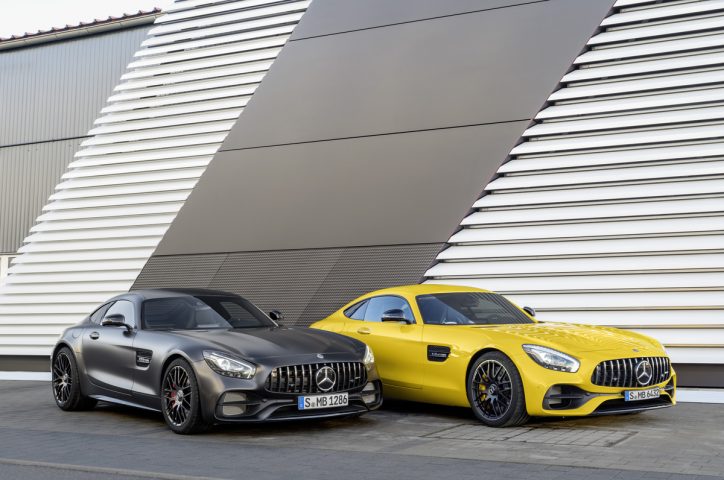Engine Comparison of the 6 Mercedes-AMG GT Versions
Giancarlo Perlas January 10, 2017
Introduced in September 2014, the Mercedes-AMG GT definitely stood up on its own as a worthy successor to the Mercedes-Benz SLS AMG. Fast forward to two years, its maker expanded the range to a total of six versions.
Now, the brand has the Mercedes-AMG GT, Mercedes-AMG GT S, Mercedes-AMG GT Roadster, Mercedes-AMG GT C, Mercedes-AMG GT C Roadster and Mercedes-AMG GT R for customers. Note that we did not include the Mercedes-AMG GT3 here because it is only exclusive to racing teams.
Below is a quick look at the key engine specs of the six models of AMG GT so far. Note that all the cars mentioned have the handcrafted 4.0-liter biturbo V8 engine of AMG but some have varying outputs based on Mercedes-Benz USA.
1. Mercedes-AMG GT
The AMG GT produces 469 hp and 465 lb-ft. It has a zero to 60 mph acceleration time of 3.9 seconds and top speed electronically-capped at 189 mph.
2. Mercedes-AMG GT S
The AMG GT S packs 515 hp and 494 lb-ft of torque. The power propels it from zero to 60 mph in just 3.7 seconds while its maximum speed is electronically-locked to 193 mph.
3. Mercedes-AMG GT Roadster
The AMG GT Roadster boasts the same output as the standard AMG GT, but its top speed is only electronically-limited to 188 mph.
4. Mercedes-AMG GT C
The AMG GT C takes 550 hp and 502 lb-ft of torque. The figures enable the car to sprint from zero to 60 mph in just 3.6 seconds. Its max speed is electronically-capped to 197 mph.
5. Mercedes-AMG GT C Roadster
The roadster variant of the AMG GT C shares the same output with its roofed sibling, except the top speed of the roadster is electronically-locked to 196 mph.
6. Mercedes-AMG GT R
The AMG GT R is the most powerful among the models mentioned here. The sports car gives off 577 hp and 516 lb-ft of torque. The acceleration of the auto from zero to 60 mph is at 3.5 seconds. The AMG GT R can reach up to an electronically-limited speed of 198 mph.





























